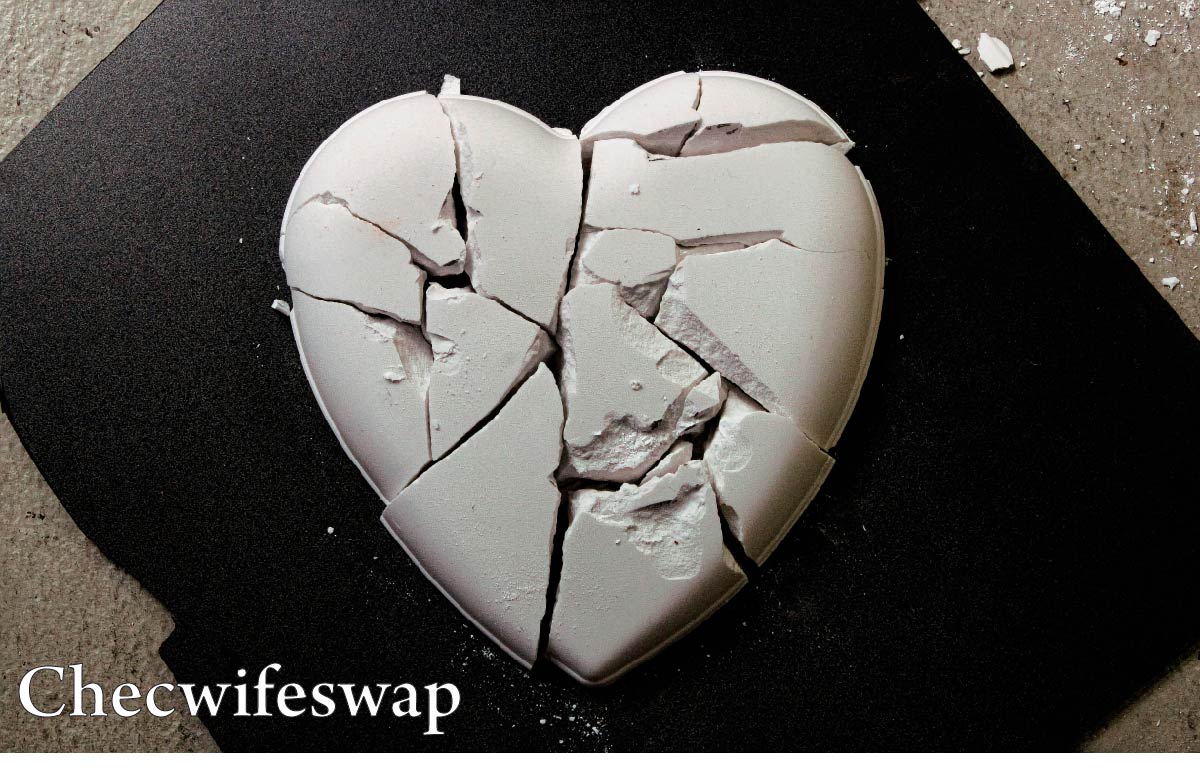Introduction
Checwifeswap is a term that instantly sparks curiosity because of its intriguing, controversial, and multifaceted identity. At first glance, many associate it with taboo practices like partner-swapping or unconventional relationship experiments, which has given it a reputation for pushing social boundaries. However, Checwifeswap is not limited to this single meaning. Over the years, it has evolved into a concept with multiple interpretations: it originated from reality television formats where families swapped spouses, it later inspired digital storytelling platforms that use life-exchange experiences to build empathy, and it has even found a place in food and cultural storytelling where participants exchange kitchens and culinary traditions.
This diverse usage has made Checwifeswap a widely searched term online, as people want to understand its origins, meanings, controversies, and impact. In this article, we will explore the full story of Checwifeswap—its roots in reality TV, its role as a cultural experiment, its evolution into digital and culinary spaces, the ethical debates it raises, and its potential future as a tool for empathy and global connection.
The Origins of Checwifeswap
The earliest roots of Checwifeswap can be traced back to reality television formats that captured public attention through the idea of spouse-swapping between families. The concept was straightforward yet provocative: two households, usually chosen for their stark differences in values, lifestyles, and cultural backgrounds, would temporarily exchange spouses for a set period of time. The format highlighted conflicts and misunderstandings while also showcasing moments of growth, empathy, and personal reflection. Casting was carefully designed to create contrasts—urban families would be swapped with rural ones, strict households with more relaxed ones, and conservative values with liberal outlooks.
Behind the scenes, producers conducted psychological assessments to ensure participants were emotionally ready, but the show’s controversial premise still generated heated debate. Critics argued it was sensationalist, exploiting families for entertainment, while supporters praised it for offering a mirror into society’s differences. Early popularity came from this tension—audiences were both shocked and fascinated, fueling high ratings and constant discussions about Checwifeswap in media outlets.
Checwifeswap as a Social and Cultural Experiment
Beyond being a television stunt, Checwifeswap can also be seen as a social and cultural experiment. By placing individuals into unfamiliar environments, the practice exposed deeply rooted class divides, cultural clashes, and lifestyle differences. Families discovered firsthand how others lived, often confronting their own prejudices in the process. The emotional lessons were significant: couples sometimes learned the importance of communication after seeing their partner adapt to a new environment, while parents realized different parenting styles could reveal both strengths and weaknesses in their own approach.
For viewers, Checwifeswap became a fascinating lens into social dynamics, forcing them to question how much of identity is shaped by environment and tradition. While some audiences judged participants harshly, others found inspiration in the way families adapted, grew, or reconnected. As a result, Checwifeswap transcended its entertainment label and started to be studied in sociology and media studies as a unique cultural experiment.
The Digital Evolution of Checwifeswap
As the world shifted towards online interaction, Checwifeswap found new life in digital spaces. The concept evolved into platforms designed for anonymous story-swapping and structured empathy-building. Instead of physically exchanging spouses or homes, individuals could now swap life stories over a guided six-day journey. Each day, participants were given prompts—describing their living spaces, sharing family histories, revealing personal struggles, or reflecting on dreams and fears. This structure allowed for a gradual deepening of the connection, creating safe spaces for honest reflection. Key features included anonymity, AI-generated reflection prompts, and community archives where users could preserve and share their experiences as story capsules.
The benefits were significant: people reported emotional healing, increased self-awareness, and stronger empathy for others. By removing sensationalism and focusing on vulnerability, Checwifeswap in its digital form became less about spectacle and more about personal growth, offering a platform that mirrored the emotional insights of its TV origins while avoiding the pitfalls of public exposure.
Checwifeswap in Food and Cultural Storytelling
Another surprising transformation of Checwifeswap occurred in the culinary world, where it was reimagined as a food and cultural storytelling format. In this version, participants—whether amateur cooks or professional chefs—swap kitchens and immerse themselves in each other’s culinary traditions. The experience is more than just about recipes; it is about cultural exchange, heritage, and creativity. Checwifeswap in this context allows people to step into someone else’s culinary world, learning techniques and flavors that reflect their history and identity.
Social media platforms such as Instagram and TikTok amplified the impact of this version, as participants shared behind-the-scenes content, viral cooking moments, and cross-cultural food discoveries. Viewers enjoyed not only the food but also the human stories behind it—how traditions are passed down through families, how migration shapes cuisine, and how food becomes a bridge between communities. By using food as a medium for storytelling, Checwifeswap extended its relevance into an area that is both universal and deeply personal.
Why Checwifeswap Sparks Controversy
Despite its diverse applications, Checwifeswap continues to spark controversy, and this is part of what makes it so widely discussed. In its reality TV origins, many critics questioned whether it was exploitative, turning private family struggles into public entertainment. Ethical debates emerged around whether it promoted healthy self-reflection or simply engineered conflict for ratings. In the digital empathy platforms, skeptics worry about anonymity leading to misuse or shallow connections. In the culinary reinterpretation, concerns have been raised about cultural appropriation, oversimplification of traditions, or selective representation of cuisines.
Online discussions often highlight these tensions, with some praising the innovative aspects of Checwifeswap while others accuse it of misrepresenting families, cultures, or personal struggles. This polarization fuels its visibility online and ensures that Checwifeswap remains a contested but relevant concept.
Emotional and Psychological Impact
One of the most significant dimensions of Checwifeswap lies in its emotional and psychological impact. For participants in reality television formats, the challenge of living in a new household often created stress, jealousy, or insecurity, but it could also lead to breakthroughs in empathy and communication. In digital storytelling, users have described both the vulnerability and the catharsis of sharing personal stories with strangers. While some found it liberating, others admitted feeling drained or regretful afterward. In culinary exchanges, participants sometimes confronted cultural insecurities or the weight of representing traditions authentically.
Mental health considerations therefore play an important role in any form of Checwifeswap, as the practice often forces individuals to confront emotions they may not have acknowledged before. This duality—risk and growth—makes the psychological impact of Checwifeswap both complex and worth studying.
Ethical Considerations of Checwifeswap
Ethics are central to any discussion of Checwifeswap, whether in relationships, television, digital storytelling, or cultural exchange. Consent is absolutely essential in contexts involving lifestyle or partner swaps, as participants must fully understand and agree to boundaries. In media portrayals, respect for cultural representation is crucial, since oversimplification or stereotyping can perpetuate harm. The balance between entertainment and emotional responsibility is another ethical challenge, especially for reality TV producers who must navigate between authentic storytelling and audience expectations for drama.
Academic studies often highlight Checwifeswap as an example of how media can both illuminate and exploit social differences, raising questions about whether the benefits outweigh the risks. Ultimately, ethical considerations ensure that discussions around Checwifeswap go beyond curiosity to meaningful debates about responsibility in media and society.
Key Features That Make Modern Checwifeswap Unique
Modern versions of Checwifeswap stand out because of several unique features. In digital platforms, anonymity allows participants to open up more freely, creating genuine vulnerability without the fear of judgment. Story capsules preserve personal reflections, creating a living archive of diverse human experiences. Themed events or Swapathons encourage exploration of specific life areas, such as grief, eco-living, or generational wisdom. AI-powered reflection tools guide participants deeper into self-discovery, while culinary versions bring cultural diversity directly to the table.
Together, these features make Checwifeswap not just an activity but a structured ecosystem for empathy, storytelling, and cultural exchange. Its uniqueness lies in combining bold experimentation with meaningful human connection.
Benefits of Checwifeswap
Checwifeswap offers numerous benefits across its different forms. As a cultural experiment, it encourages empathy and understanding across class, culture, and lifestyle divides. In digital form, it provides personal growth, emotional clarity, and therapeutic benefits for users seeking to share or reflect. As a culinary exchange, it celebrates cultural diversity, educates viewers, and fosters creativity in the kitchen.
Entertainment value also cannot be ignored—Checwifeswap captures attention and sparks important debates about relationships, society, and culture. Perhaps most importantly, it acts as a bridge, connecting individuals and communities worldwide, reminding us that despite differences, shared experiences can foster meaningful bonds.
Criticisms and Limitations
While there are benefits, Checwifeswap is not without its limitations. For reality TV participants, the emotional risks could be severe, sometimes leading to regret or damaged relationships. For digital users, anonymity may encourage oversharing or expose vulnerabilities without adequate support systems. Culinary formats may unintentionally reduce complex traditions into short, consumable segments for entertainment.
Online backlash and criticisms about authenticity, representation, or exploitation remain common. These limitations highlight the need for careful design and ethical oversight, ensuring that Checwifeswap continues to offer value without causing harm.
The Future of Checwifeswap
Looking ahead, the future of Checwifeswap seems promising yet complex. Digital storytelling platforms are likely to expand, with potential integration of virtual reality and augmented reality to create even deeper immersive experiences. Educational institutions may adopt Checwifeswap-inspired models to teach empathy, cultural studies, and social awareness.
Therapy and counseling could also integrate structured story-swapping as a tool for emotional growth. In the culinary world, partnerships with underrepresented communities could amplify voices and ensure authentic representation. The broader prediction is that Checwifeswap will continue to evolve from its scandalous reality TV roots into an empathy-driven global movement, reflecting society’s desire for deeper human connection.
Conclusion
Checwifeswap is a term with a complex identity that has traveled far from its origins. What began as a provocative television format has grown into something much more nuanced—digital empathy platforms, cultural storytelling exchanges, and culinary reinterpretations. It continues to attract both criticism and praise, reflecting society’s curiosity about human connection, perspective, and empathy.
By examining its origins, transformations, and ethical debates, we see that Checwifeswap is more than a passing trend; it is a cultural mirror that forces us to confront our assumptions while reminding us of our shared humanity. Whether viewed as scandalous or meaningful, it remains a concept that shapes conversations about relationships, culture, and the future of human interaction.
(FAQs)
What does Checwifeswap mean today?
Today, Checwifeswap refers to multiple things: a reality TV experiment, a digital empathy platform, a cultural exchange, and even a culinary storytelling show.
Is Checwifeswap still a reality TV show?
While traditional reality versions exist, the concept has expanded into online and cultural spaces, offering new interpretations beyond television.
Can anyone participate in digital Checwifeswap platforms?
Yes, digital formats are open to anyone interested in structured storytelling, though anonymity and safety protocols are key features.
How does Checwifeswap build empathy?
By encouraging people to step into others’ lives—whether through story-sharing, cultural exchange, or role-swapping—it fosters perspective-taking and understanding.
Why is Checwifeswap controversial?
Its controversies stem from its provocative name, ethical debates about exploitation, and questions of authenticity in representing cultures and personal lives.






Leave a Reply